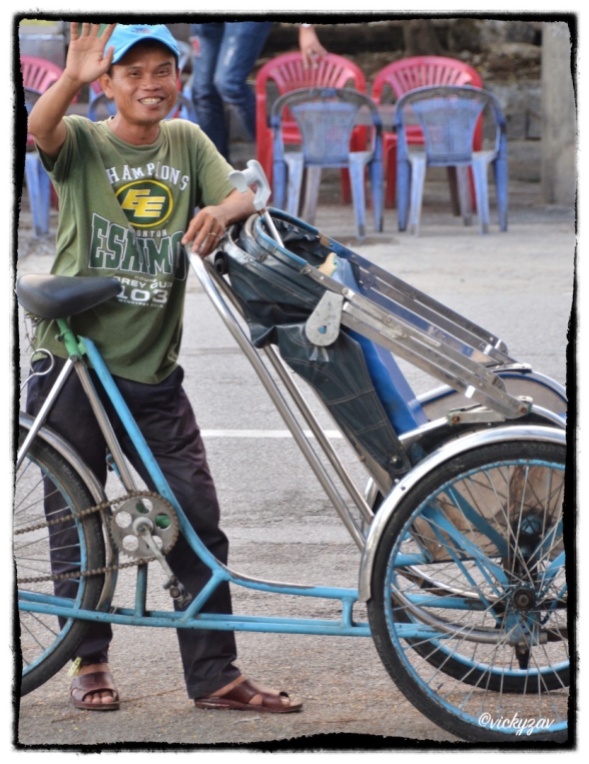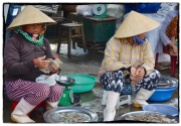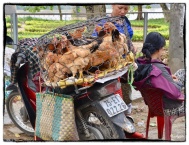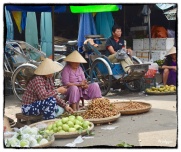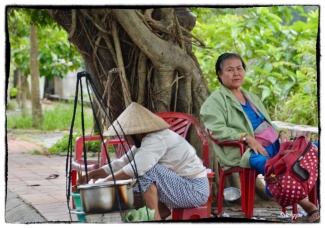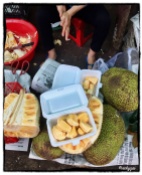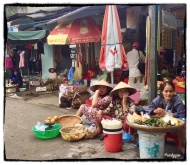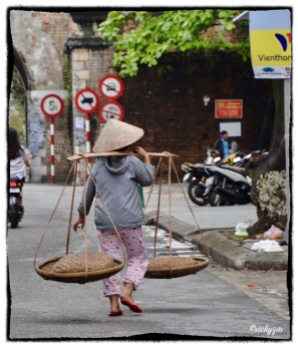I love Sri Lanka.
Colourful, vibrant, busy… a place to go to lift your spirits.
This visit was a Northern trip, up to Tamil land. Not too much in the way of tourism as yet, but that’s the time to go.
It’s an easy trip from Dubai, well served by airlines and Emirates has the advantage of a 2.40am flight, arriving at Colombo at 8.40am so with a quick plane sleep, the arrival day is hit the ground running.4WD hired from the airport, all fairly painless and off to the road to Kalpitya, via Negombo and Chilaw. Apart from the hair-raising driving, a relaxing first day.

Colombo Airport to Dolphin Beach resort…
An overnight stop at my all time favourite resort of Dolphin Beach on the Kalpitya peninsula. Discovered in 2013, it’s my Sri Lanka home and every chance I get, I go there. A small tented paradise, the best host, wonderful food and happy staff, bliss, a “feet in the sand” break.

Dolphin Beach to Mannar Island…
Day two saw us off via Puttalam and the coast road through Wilpattu National Park,with prosciutto sandwiches & cool-box courtesy of Dolphin Beach. Researching the road on the net, there isn’t too much information, it’s not tarmac, subject to military closures, completely off the main routes, impassable in the rainy season but luckily, not as bad as expected.Road reference is B379.

So colourful…

Normal to see in Sri Lanka…

No need for words…

Causeway into the park..

Buddha at the entrance…

Wilpattu sign…

On the park road…glad it wasn’t raining…

Beautiful trees in the park
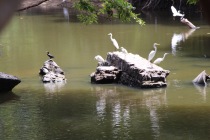
Birds in the park…

Caught the heron perfectly…

Just resting on the tree-top…
The road passes through Puttalam, signed to Mannar. A tarmac road until close to the park entrance with a Naval guard post on the river bank, but we were waved on through without any check down to a small bridge to cross the river. On the other side to the right is a Park office, but the gates were open, no-one was visible, so in we went. I had read that a fee was payable but there was no-one on the road bar a couple of safari jeeps.
There is little access off the road to explore, the coastal side turnings are all entries to small Navy bases replete with No Entry signs. Only a couple of turns into the park, but as journey timing was uncertain, it was time to push on. Beautiful birds on occasions, but it was a long dusty track with jungle on either side. A good shortcut as the alternative route is skirting Wilpattu inland, which is a much longer journey.
Exiting the park, the check post showed no interest so on we drove. It’s apparent that you are entering a region where the long Tamil War ravaged the countryside and lives. Poor villages, semi-destroyed, with many charity, government and NGO signs, some re-development, a real mix of poverty and charity, but all mainly unfinished. Roofs of new build villages were plastered with sponsor’s names, but often unfinished, with the resettled living in some rough conditions. Close to the park the road, now tarmac, is fairly poor.

traffic in the village…

main road through a village..

waterlilies on the lake…

the mystery tower

Doric house at Arippu…

sadly the Doric house is long neglected..right in the war zone…

breaking through the Doric wall…

Iguana sunbathing…

Roadside religion…
Passing through Arippu, a prominent ruin on spotted on the coast. A Doric house lived in by the British Governor, Sir Frederick North, built in 1802 to supervise the pearl fishing which was once prevalent in this area. Close by is a strange tower, with no apparent use, reputedly holding lit fires at the top to guide the pearl fisherman back to shore. A brief stop to explore, a quick stroll along the beach just to check whether there any shells, but the powerful monsoon seas were sweeping the beach clean.
Onwards to Mannar joining the B403 and crossing the lagoon and long causeway to the island, past some beautiful areas and plenty of birds. There is a Bird wetland reserve at the entrance to Mannar lagoon.
Vankalai Sanctuary, comprises Puliyantivu island, Tiruketiswaram, Pallimunai, Vankalai and the strips of land on either side of the causeway connecting the island of Mannar to the mainland. Covering about 4,800 hectares, it consists of arid-zone thorn scrubland and pastures, waterholes and tanks, sand dunes, mangroves, salt marshes, lagoons and sea-grass beds and maritime grasslands.
Mannar town is at the end of the causeway, which was busy, colourful and vibrant, traffic as usual in Sri Lankan towns was busy, but not so many cars up here. Mainly mopeds, bikes, buses and small lorries.Passing through town to the next hotel, Shell Coast resort, we headed up the island. As there is only one road to the end of the island and Talaimannar, finding the hotel was fairly simple. A beautiful drive across to the southern coast through groves of glorious trees, then hard right onto a sand track, a couple of kilometres along, Shell Coast resort is tucked back into the dunes and vegetation.

Mannar town centre…

Colourful Mannar…

Lots of cooking pots…

Mannar fort…

Trees to the coast…

So green…

To the resort…

Temple in town…
Checking out the accommodation options on the net, there were not a lot of choices on Mannar and Shell Coast seemed to be the only place that looked to be of a good standard. Lovely staff and food, an odd little bungalow to sleep and bathe in, but it only used for a base. It was fairly expensive by Sri Lankan standards, the resort had only been open a year, much to do but the lovely hotel manager made up for any shortcomings.
A walk down to the coast, 5 minutes away, for a quick check down the beach revealed a mass of plastic and fishing waste. The beach area for the hotel is kept clean, two poles at either mark the boundaries, a little clean haven amidst miles of rubbish in either direction. During monsoon you cannot swim on the West coast, the sea is too dangerous and rough and the Mannar locals scathingly referred to the mess as “coming from India” accompanied by a nod to the north..but no-one cleaned it up.

Monsoon brings plastic…

Shrine with a view…

Sleepy main road across the island…
Heading off to Talaimannar to visit the end of the island, we passed by the railway station which during 1914-1964 was a part of the train and ferry link to India, arriving at Dhanushkodi on Rameswaram island off the south-eastern coast of Tamil Nadu, India. After cyclone damage in 1964, this service was not resumed.
The road to the tip of the island runs on the eastern side and setting off to see how close we could get, we spotted some fishing shacks and lovely tranquil seas so stopped for a walk along the beach. Mounds of shells in every direction, it was a shell collector’s heaven. Lambis and Pyrum Turbinellum in heaps behind the shacks, with plenty of other findings. After a walk to see “Adams Bridge”, a faint mound of islets in the direction of India, we returned back to collect. Quite what the local fisherfolk made of these two tourists gathering discards, we’ll never know, but friendly smiles all around.
The inevitable Navy base blocked off access to “Adams Bridge” formerly known as Ram Setu. It is a chain of limestone shoals between Rameswaram island off India and Mannar island. Previously accessible via a navy boat trip, there is now no access.
Geological evidence shows this bridge was a former land crossing between the two countries. On the western side, during monsoon the waters were rough and boats do not sail but on the eastern side, the waters were flat calm. When monsoon moves to the Indian ocean during the winter months, the situation is reversed.
Heading off to a point on the eastern side of the peninsula ( i.e. the only road we could find) flat, turquoise seas and long beaches, littered with shells greeted us. Followed by groups of children and men for photography sessions, we were surrounded by smiling faces, lots of chatter, then posing for my camera but, after the obligatory photos had been taken, there was no interest in seeing the results so we were left alone to collect shells. It was hot and humid and further along the beach was a Navy outpost, consisting of a shack and rickety lookout. The guard came out and invited us to drink coconut in the shade, chopping a fresh one; we shared it gratefully, had the chance to see his quarters which were dismally primitive, but he was happy to be in service, paid and housed.

Termite tree…

Old temple, Modern power…

Love the buses..

Didn’t choose this hotel…

Mending the nets…

Railway to Talaimannar…

Herons on the beach looking for food…
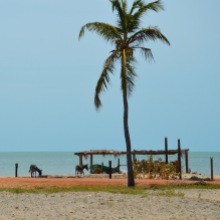
Donkeys on the beach too…

the abandoned ferry jetty to India…Mannar island, Sri Lanka…

Fresh coconut drink for me…

A lonely Navy outpost…

Just strolled over for me to take a photo…

Very pink post war re-settlement village…

Photo opportunity and some dried sea-horses as a gift too…

Roadside shrine…

Home after shopping…

At the tip of Mannar, one dog and a boat…

Riding the outside of the bus…

Blue church…

Paddling at Pelei…

Religion is very strong in the rural areas…plenty of churches….

A while ago now…

A fishing community

My beach followers…

Tuk tuk, umbrella and colour, so Sri lanka…

Mannar to Jaffna…
Loaded with shells and images of this barren island, vibrant colours on the temples, clothes and homes we set off for Jaffna past the busy market. Leaving by the same causeway we set off. Not far down the road a temple across the lake looked promising so a quick stop to catch the atmosphere. Not too many people, several families helping the elderly members down the steps into the lake for the Hindu ritual bathing. A tranquil place.

A view over the small lake…

Wish I knew more about this religion..All the temples are so vibrant…
The road to Jaffna passes through several small villages, the coast is all mangrove swamps in this region, and getting to the coast looked difficult so plenty to see in Jaffna. Hotel of choice was Charty Beach resort, again, not much choice in the North. Tourism is mainly local, Sri Lankans from the south, Indians from Tamil Nadu. The Tamil population is evident in the North, more vibrant sari’s and much darker skin colour.

By the side of the road…

Waiting for the bus…

Great roots..

Golden shrine…

All dressed up in the country…

Ganesh idol…

White lilies…
Jaffna sits on a lagoon with causeways out to the various islands. The town is under re-construction and development but signs of the long war were visible everywhere, bombed house, bullet holes in walls. The causeway to Kayts island, where the hotel was based on Chaddy beach was under re-construction so it was a muddy, tortuous ride across. Chaddy beach is a popular one for Jaffna locals, the resort was basic, no food on site, but the rooms, were large clean and comfortable and anything mimed for, little English spoken in this area, was provided.
Heading off to discover all the islands that make up the barrier between the ocean and Jaffna we hit upon Punkudutivu with yet another long causeway connecting. Beyond this is Nainativu with the temple of Nagadeepa Rajamaha Vihara. Driving across this remote and sleepy island the road ended at a jetty which was packed full of stalls and people. Nainativu is only accessible by boat but visible in the distance. As it was fairly late, the boat trip was ditched and Jaffna was the food destination.
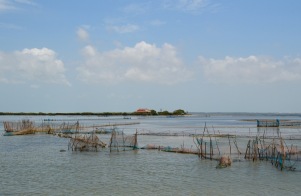
Church in the lagoon…

Sadhu on the road…

Temple art…

Cycling home from school…

Lagoon fisherman…

Roadside shrine…

Island temple…

Jaffna temple…

Hiding from the sun…

Sleeping in the shade…

Sleepy village, huge temple…

Sea shrine…

Girls in field…

Destruction in Jaffna…

Relaxing by Charty beach…

Jaffna hotel garden, very peaceful ..we were the only guests…

Agreed…

Causeway across one of the lagoons…

Schoolboys giving the bird…

at least its fully insured…
The next day the intention was to make our way along the North coast to Point Pedro, the furthest tip of the North Eastern part of the island. Beautiful palm-lined beaches, temples and small villages were on either side of the country road and we took our time, stopping, sightseeing and enjoying the slow pace in this rural area.

The road along the northern coast…

The coastline…

View to Bay of Bengal…

Just chilling in the road…

Roadside shrine, big icon…

roadside grotto…

Old fisherman resting in the shade…

Great to see Toddy and Jaggery being sold..
At Selva Sannidhi, the coast road is no longer open to the public. A large area beyond is military and after several tries to cut through off-road via small tracks through the jungle, barbed wire, guard posts and mine fields thwarted the attempts so a long detour had to be made to hit the coast around Alvai.

Ruins in the jungle…

Perfect antique car in the jungle….

Old temple ruin…
This part of the coast has wicked coral reefs offshore, and as fishing is the staple of life, ingenious channels have been created to allow boats access to the shore. Finally Point Pedro, next stop north, India and to the east, Thailand, across the vast Bay of Bengal.

Religious Festival icon on the coral reefs at Point Pedro….

Lots of these signs on the East coast…unclear where the routes ended…

Woman carrying palm leaves, on the road to Point Pedro…

Little bus traveller…

Stingray for market…

Church and church, old and new…

Post box on the north coast….

Check out the small boat at the front…

Point Pedro port…

Sorting dried fish…

Point Pedro,Sri Lanka.. a long way from most places…
Feeling very large, white and European amongst the welcoming locals, the first people we saw at Point Pedro were two other Australian tourists! The only ones seen all day… An old fort, lighthouse, it was a sleepy provincial town. Bicycles, Tuk Tuks and small tractor type transports filling the streets, pi-dogs sleeping in the shade, and the occasional villager swaying down the street, balancing goods on their heads.
Heading off to the long sweep of beach around the Point, access to the sea shore was not intuitive. Luckily the GPS found the way in and the road ended at a large Catholic church, with a Statue of Christ appearing to hold back the sea. Calm, flat seas, it was a beautiful place but the sunset wasn’t too far away, so it was time to weave our way back along the roads to Jaffna.

Long East coast beach….

Traditional boat still in use…

Beach graveyard at Vallipuram, East coast…

Christ by the sea…
The missed restaurant was found, a little place called Mangos, close to the temple in Jaffna centre. Leaving the choice to the waiter, we ate fantastic Dosa… I didn’t know what they were either… huge rounds of folded, fried Indian bread with a selection of dips, all vegetarian, absolutely delicious, more were ordered!

Delicious dosa at Mangos restaurant, Jaffna….Not to be missed if you are in town…
Wandering around the streets later I found a sari shop. The choices of fabric, design and colours were so difficult to choose from and the owner was pleased to sell me a length to make up a dress, however planned dress is still on the “to-do” list !

Jaffna to Trinco…
A long drive down to Trincomalee the next day. Heading off the main road to meander down the coast, it was unclear on the map whether the coast road ran all the way down or whether we would have to cut inland. Try and see, being our usual motto, we did. Through sleepy villages, still in Tamil land, beautiful beaches, bird-filled lagoons and mangrove swamps were interspersed with rivers and ports.

Sri Lanka painted stork and pelicans…

Three striped palm squirrel spotted at Charty beach, Jaffna…

All smiles for me…

Heron with fish and painted storks and pelicans… by the Parentan / Pooneryn road heading down to Trinco…
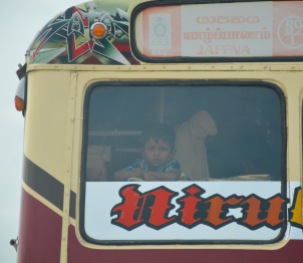
Little bus traveller…
Finally, the road ran out, so a walk along the beach to the narrow estuary. Fishermen were bringing in the nets, men strung out along the beach, hauling in the net by hand.We arrived as the small catch was poured onto the black sand. It wasn’t much and the village was poor, small bamboo huts were homes for these folk.

Black birds, pot and sand….

Bringing the nets in…

Bringing the boat in…

Some-one’s home…

Field temple…

drying fish..

nets weighted by turbinellum shells…

The catch on the black sand…

Village and shrine…
Heading back to the car a Nautilus find, broken but still a Nautilus, tossed up on the back of the beach or discarded from the nets.. A prize !
A long detour inland around the estuary, past vast waterholes, some loss of way, resulting in some questionable routes but eventually Trinco was reached. Outside of town a quick beach stop, caught up in conversation by a fisherman, a gift of tiny olive shells, his wife cleaning piles of them to sell for jewellery making.

Monkey spotted by the roadside at Vellamullivaikal…

Trees, birds and lake on the road to Welioya…

Roadside rambutan seller…

A saint’s shrine…

rural playtime…

Ice cream seller in the small village…

Tree and monkey…

water & buffalo…

Out in the country….

Mangroves…

Lots of logs on that tractor…
The resort was small and simple, but homely, run by a Sri Lankan and his Italian wife, a small hotel in the most idyllic location. It was terribly hot, a walk down the beautiful beach yielded nothing to collect so a leisurely meal, a few drinks by the flat calm sea and it was bed time. Heading into Trinco centre the next day, exploring the town, it was humid, oppressive and tiredness was kicking in, we hadn’t stopped exploring since we arrived. The decision was mutual, time to cut the visit short and head back to Dolphin Beach for an extra day.

East coast beach beauty….

Roadside statue…

Salubrious name…

slow rural street life…

Sorting the catch…

The North…

outrigger boat on Trinco beach…

Roadside seller…

It was rambutan season…

Trinco hotel walk to the beach…

Trinco promenade…

Fish drying on the road side…

The catch…

Cheerful roadside caption…

Olive shell gift…

On Trinco beach, variety of fishing boats…

Nets at Trinco…
Organised, a quick pack and on the road again. The route is straight across the island with beautiful scenery, its so green and lush, with water buffalo, farming and few cars.
The road passes through Anuradhapura, a major town in this North central province. Anuradhapura is one of the ancient capitals of Sri Lanka and is today a Unesco World Heritage site.The ancient city, considered sacred to the Buddhist world, is surrounded by monasteries covering an area of over sixteen square miles.
We did a random drive through; hurrying to get back, we ended up driving through part of the Ancient city, having taken a wrong turn.The monuments are spread out around the city and feeling weary, a little taste from the car seemed enough. The temples,statues and monuments were spectacular, to be re-visited…

Monk on his mobile…

Riding with the veg….

Military monument in the north…

My first “beware of elephants” road sign…

At Anuradhapurna…

On the road to Anuradhapurna…

Big Buddha….

Relics of Navy ships and subs used in the war…

Good balance…

Tuk Tuk Rambutan stall…

Another post box framed in purple…

Bullock transport…

Anuradhapura ancient temple…

Monk resting on a wall…

Cows on the road….
Dolphin Beach welcomed us, a swim in the pool, Sri Lankan curry for dinner with a good bottle of wine, an early night..a whole day of shelling ahead.
This part of Sri Lanka seems to have the best opportunities for finding shells. Fishing villages, discards from the net are always walked along. So the collection grew. Leaving the excess at the resort for the guest basket, handing out Lambis to all the children, we packed away a few to not hopefully cause any issues at customs. Taking shells out of countries is subject to their laws plus Cites agreements for rare shells, but customs are looking for traders as opposed to beach collectors.

What comes out of a Lambis chiragra… found fresh dead…

Beautiful starfish…
The next day customs stopped us, on opening the hastily wrapped bag he looked at the barnacle-encrusted offerings and waved us through, home with our small treasures, memories of the travel, the wonderful people; Sri Lankans are friendly, happy, cheerful people and every day the smiles, even in extreme living circumstances, were the first greeting. Outside of Colombo, a vast sprawling city, choked by appalling traffic queues, I have never felt unsafe.

Brittle starfish and crab findings…

and the girlies too…

Small boy found me a reef fish…

My little friend offering a sea slug….

My beach helpers…

Big claws, little boy…
Information:
Flight:
Emirates: Currently 3 daily flights and one via Maldives.
Hotels:
Kalpitya: http://dolphinbeach.lk
Mannar: http://shellcoastresort.com
Jaffna: Charty Beach resort – I can’t find it on the internet now. Booked on Booking.com but it no longer appears… !
Trincomalee: Bella Nilaveli Hotel, also disappeared. Plenty of choice in Trincomalee though.
Driving in Sri Lanka: Not for nervous drivers, if driving south allow plenty of time to cross Colombo. Traffic is dire in the city. Outside, apart from the toll road south to Galle which is virtually empty, care needs to be taken, bicycles weaving, pedestrians wandering, cows roaming and tuk-tuks, buses and lorries drive without much regard for others.To the north, roads are quiet.
Drivers can be hired for not much more than the cost of car rental, most car rental companies provide a driver.Having given dire warning, we have always driven in Sri Lanka.I have had plenty of closed eyes, foot on imaginary brake moments…
Driving licenses:
The government of Sri Lanka has decided to ease the driver’s license registration process for tourists traveling from abroad. From August 2014, travelers will be able to register their driver’s licenses directly at the airport when entering the country. The process of registration will take approximately only ten minutes and the license acquired will be valid for three months. Our hire car company completed the formalities for us in advance with a faxed copy of the driving license.
Visa: Use the government site :http://www.eta.gov.lk/slvisa/
Online visas usually received within 48 hours.
Food:
Sri Lankan curry varieties are excellent for breakfast lunch and dinner.
Plenty of choices but out in the remoter areas, not too many other options.
Supermarkets in the North have limited choice. I always pick up Saltine crackers, water, juice and fresh fruit for the car journeys.
Health:
Take travel medical insurance out. You never know…
I carry mosquito repellent and anti-bite lotion. Bactroban, ( I am always delving around in beach rubbish looking for shells and have had a few wounds), High factor sun and lip protection and Headache tablets, so far I’ve survived!



